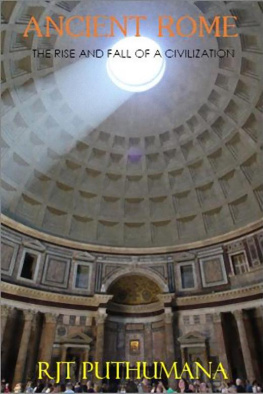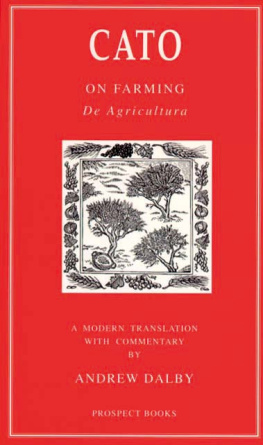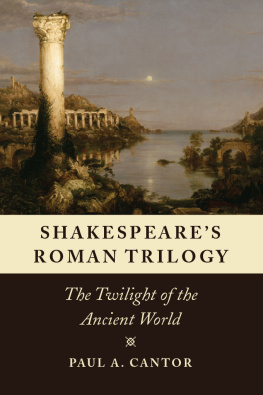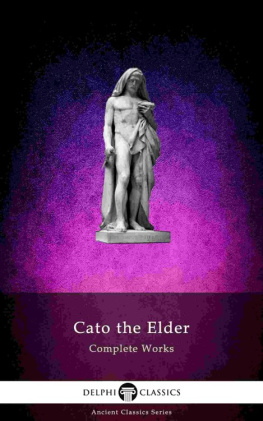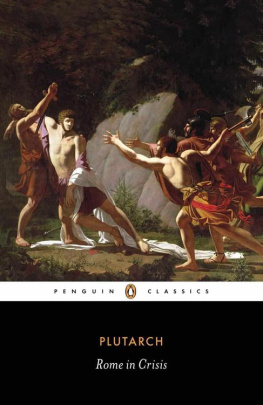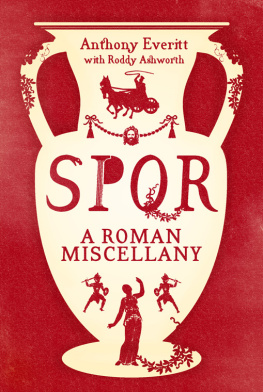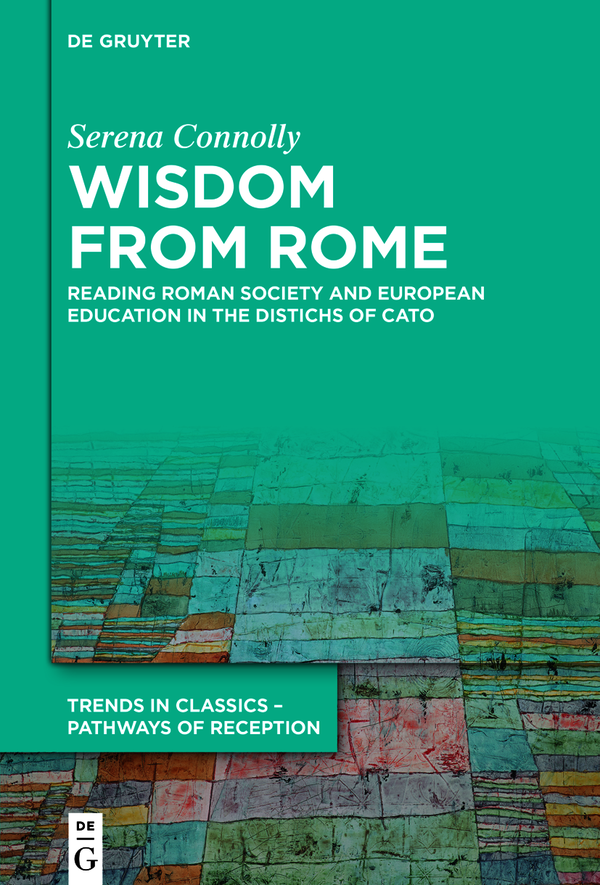Trends in Classics Pathways of Reception
Edited by
Franco Montanari
Lorna Hardwick
Antonios Rengakos
Craig Kallendorf
Fiona Macintosh
Miltos Pechlivanos
Volume
ISBN 9783110788846
e-ISBN (PDF) 9783110789492
e-ISBN (EPUB) 9783110789614
Bibliographic information published by the Deutsche Nationalbibliothek
The Deutsche Nationalbibliothek lists this publication in the Deutsche Nationalbibliografie; detailed bibliographic data are available on the Internet at http://dnb.dnb.de.
2022 Walter de Gruyter GmbH, Berlin/Boston
Serena Connolly
Wisdom from Rome
Trends in Classics Pathways of Reception

General Editors Franco Montanari and Antonios Rengakos
Editorial Board Lorna Hardwick, Craig Kallendorf, Fiona Macintosh, Miltos Pechlivanos
Associate Editors Anastasia Bakogianni and Rosanna Lauriola
Volume 8
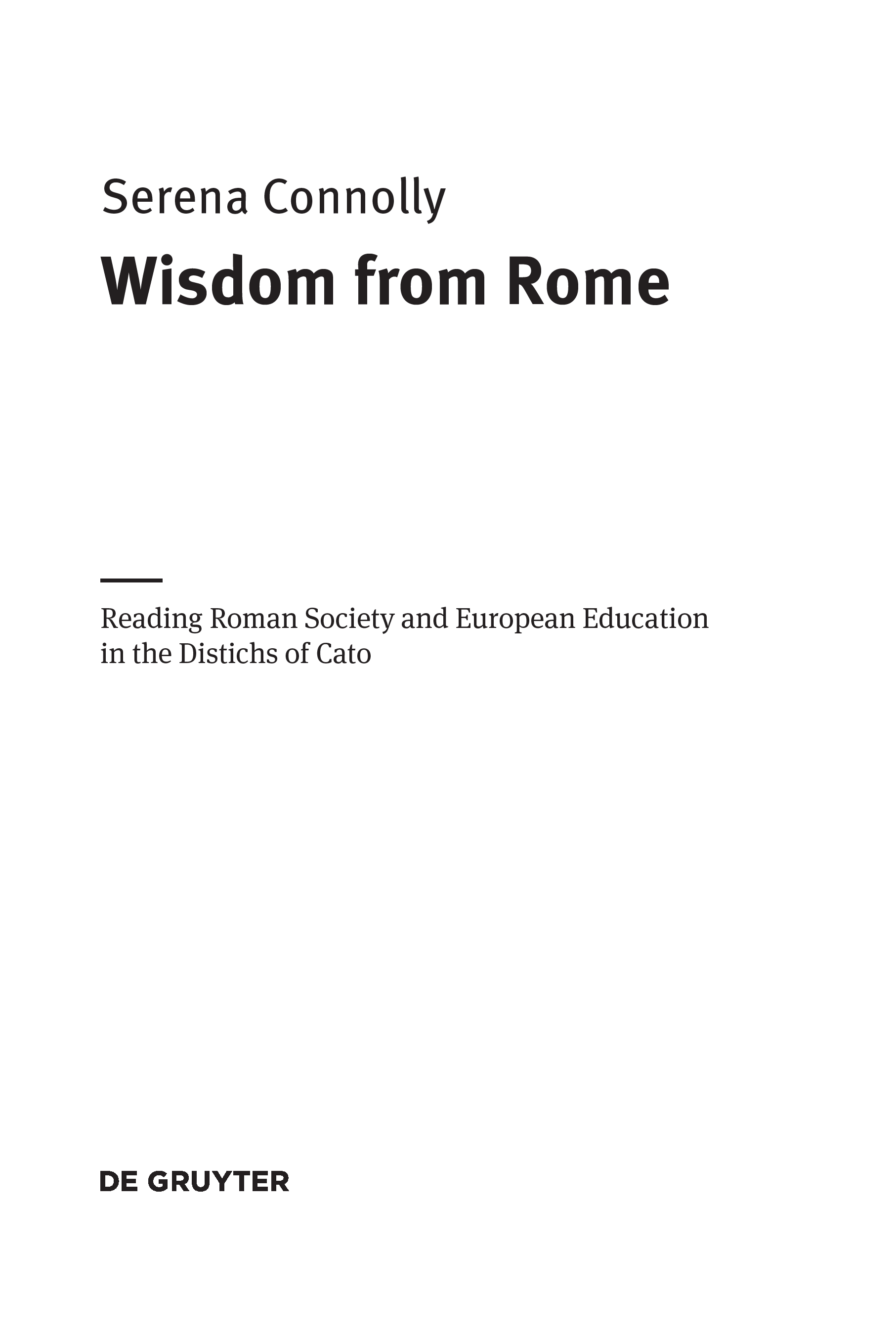
ISBN 978-3-11-078884-6
e-ISBN (PDF) 978-3-11-078949-2
e-ISBN (EPUB) 978-3-11-078961-4
ISSN 2629-2556
Library of Congress Control Number: 2022937149
Bibliographic information published by the Deutsche Nationalbibliothek
The Deutsche Nationalbibliothek lists this publication in the Deutsche Nationalbibliografie; detailed bibliographic data are available on the Internet at http://dnb.dnb.de.
2022 Walter de Gruyter GmbH, Berlin/Boston
Cover image: Paul Klee, Hauptweg und Nebenwege
Printing and binding: CPI books GmbH, Leck
www.degruyter.com
Acknowledgements
It has taken a long time for this book to reach print, and I have incurred many debts along the way. The Institute for Advanced Study provided me a stimulating environment in which to work, and I benefited from many fruitful conversations, especially with Alan Bowen. I am grateful to the Mellon Foundation for supporting my year there. I also benefited from the generous feedback of audiences at Indiana University, the International Congress on Medieval Studies at Kalamazoo, New York University, and Ohio Wesleyan University.
The anonymous readers of the press offered feedback that was incisive, thorough, and enormously helpful, and I thank them for their time and care. I am grateful to Carlo Vessella, Anne Hiller, the ever-patient Katerina Zianna, and everyone at De Gruyter for shepherding this project through the publication process swiftly and efficiently. My thanks also go to Michael Hendry, who compiled the indexes.
The staff at the Bibliothque nationale, British Library, Vatican Library, and Biblioteca Capitolare, Verona, were patient, helpful, and generous with their time. The librarians at Rutgers University Library have been indefatigable, especially during 2020 and 2021, when they worked in the most difficult circumstances. The Classics Department at Rutgers provides a warm and supportive atmosphere in which to work; thank you to my colleagues and students for your encouragement and companionship.
Finally, I owe an enormous debt to my family for putting up with me as I have spent many hours sitting at a computerto Oliver, Roger and Hazel, and Judith and Erik. And most of all to Paul, for everything, always.
List of Figures
Introduction
Rem, tibi quam noscis aptam, dimittere noli; Fronte capillata, post haec occasio calva.
Dont let slip away what you know is right for you: Opportunity has hair at the front, but is bald in the back.Distichs of Cato 2.26
Lets take the instant by the forward top. Alls Well, V.iii.39.
The image is striking: Opportunity (or Occasion) personified as a figure with long hair in front, but bald in the back. It is easy to visualize and to remember. That a figure from the Distichs should have been this familiar is unsurprising: they were the first Latin text encountered by every student of Latin for over 1000 years.
Students remembered and knew them well. There are allusions to and quotations from the Distichs from our earliest medieval texts: already in Columba
The work of Cato was highly regarded through the medieval period: a panegyric of Charlemagne compared the king and emperor to Cicero and Homer, but its highest compliment was that he outdid the renowned sayings of Cato (inclita superat ... dicta Catonis).
Chaucer was not alone in assuming that every (educated) person had read the Distichs. Carmina Burana 19, which opens Si legisse memoras / ethicam Catonis (If you recall reading the wisdom of Cato) and quotes from the collection, makes clear the assumption. The fact that the Distichs and their author were pagana fact that Langland seems to have recognized in his otherwise Christian poemmakes the assumption all the more surprising.
With the emergence of vernacular European languages, the Distichs provided inspiration, most notably for the form and content of European works of wisdom, including the medieval Proverbs of Alfred.
In the early modern period, the influence of the collection was felt widely and in multiple genres, including drama, Hamlet providing a nice example.
Around this time, the fame of Cato and his Distichs were spreading to the New World. In Peru, the Andean lord Guaman Poma de Ayala, author of a 1615 Andean history that equates the Incas and Romans temporally and culturally, mentions that in his cultures past, boys and children were instructed and taught with chastisement as Cato of Rome did, who provided good examples and taught his children, so they were well brought up. We know that hundreds of copies of the Distichs were crossing the Atlantic in the seventeenth century, and Guaman Poma probably read the collection himself, maybe even as a child. Almanack, and his translation would be the first of any Classical text produced in North America. Through Chaucer, Shakespeare, Cervantes, and now Franklin, the Distichs were firmly entrenched in the consciousness of Europe and the Americas, where they remained through the eighteenth and into the nineteenth centuries.
No one quotes the Distichs anymore, and scarcely anyonebeyond a few scholarseven reads them. Despite their ubiquity for so many centuries across Europe and in the New World too, a good many Classicists today have either never heard of them or never read them. The Distichs are no longer read in elementary Latin classes and have therefore fallen out of most peoples consciousness; moreover, a moralizing text that lacks an author or date and is written in simple Latin does not appeal to many philologists, while its unsystematic thought independent of any philosophical school renders it uninteresting to philosophers. Finally, some of those modern scholars who have looked at the collection have poured scorn on it, and only a few have deemed it worthy of their scholarship.
While the Distichs have loomed large and been admired in Western post-Classical education and literature, a fact acknowledged by scholars in those fields, the Loeb Classical Librarypresumably reflecting a general attitude among Classicistsrelegates them to the Minor Latin Poets volumes (1934). The entry for Cato Dionysius in Smiths


